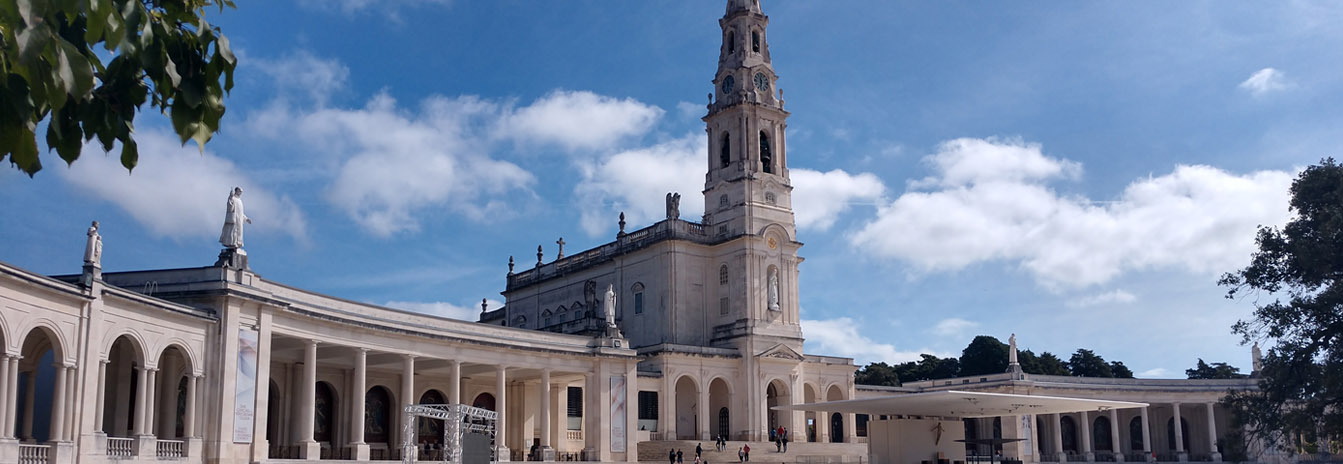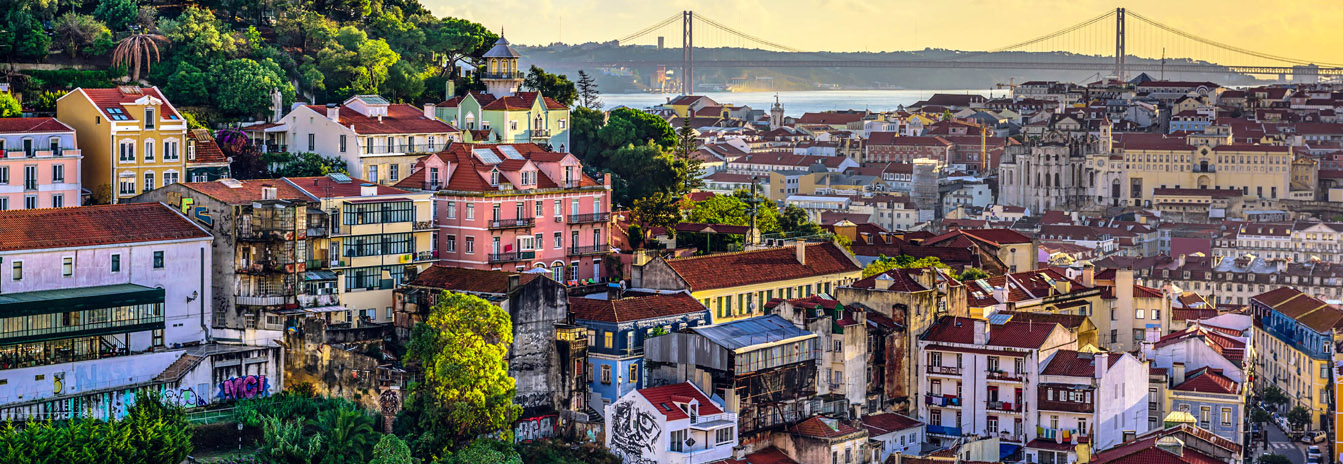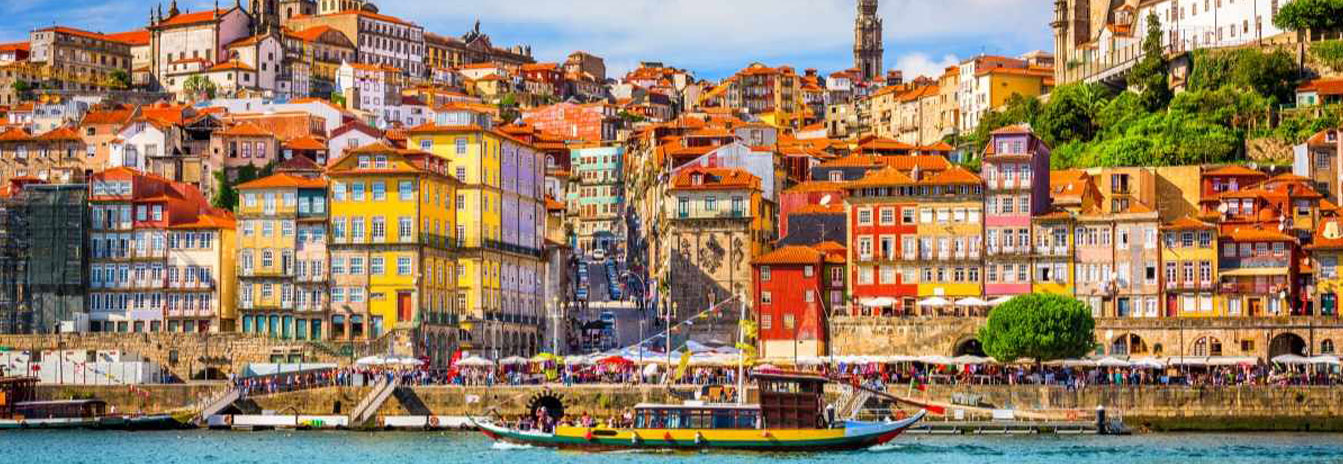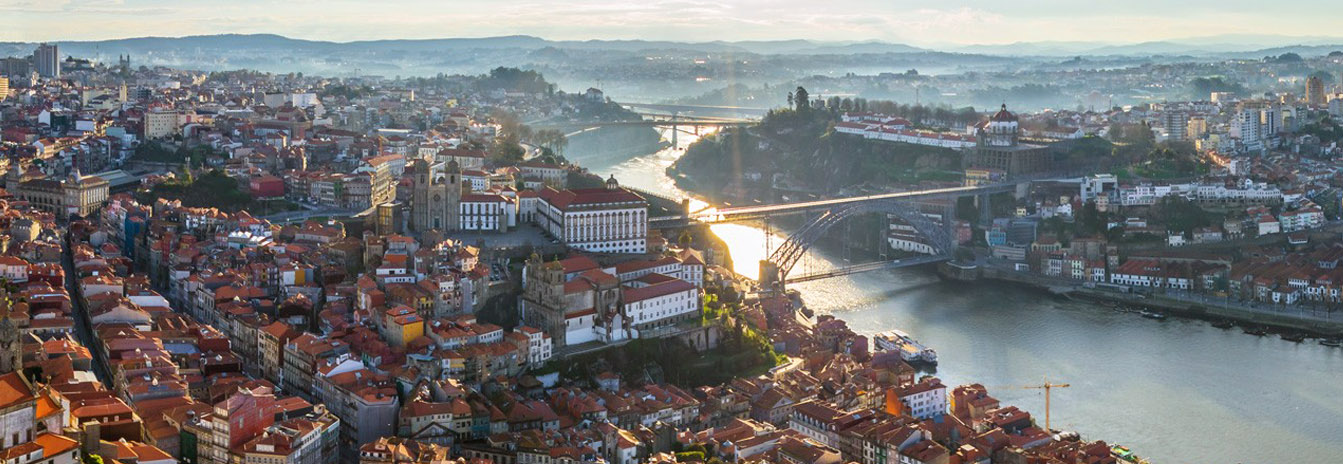Portugal starts off initially as a small county in the region of Porto in the 11th century. It is not until two generations later that the country finally gains independence and establishes its capital in Coimbra before spreading further south. Great royal monasteries are founded as historical landmarks in the face of their secular enemies, the Arabs and Castile. Once consolidated, they gave rise to a series of ports that would direct the Portuguese towards their great epic, the Atlantic, Africa and India. Their expansion will culminate in Lisbon in the 16th century when a devastating earthquake breaks the pervasive decadence and allows for a new beginning. We will attempt to see this evolution within the parameters of modern Portugal.
Day 1 Arrival in Porto and overnight
Day 2 A scenic tour through the portside city of Porto will allow us to discover its Romanesque Cathedral, the Torre dos Clerigos, the Cristal Palace, the Stock Exchange and the districts on the banks of the Douro river. The second city of Portugal has always been the most important industrial center of the country, thanks in part to the benefits obtained by the wine commerce with England. The cellars where the production of Port wines has always taken place are on the river banks opposite the Douro, in Vila Nova de Gaia. Possibility of visiting a winery with Port-wine tasting Our most indelible memory will be the magnificent views of the city of Porto, its bridges and historical district, during a panoramic cruise.
Overnight in Porto
Day 3 The cod fishermen turned to the Aveiro estuaries because its salt production. As a result, the city experienced significant prosperity during the Middle Ages. Over the canal we will visit the main streets with the Gothic cathedral and the Mannerist style church of Misericordia. Further on we will stroll along the Buçaco Park, a former monastic refuge filled with exotic plants. Possibility of organizing a typical fisherman lunch in Aveiro Coimbra, the former capital city for more than one hundred years, boasts the oldest university of Portugal, and even today the cheerful ambiance of the students permeates the city. We will see the university’s library and Romanesque Cathedral, the purest expression in all of Portugal, prior to strolling down the narrow streets to the Carmelite Convent where Sor Lucía, one of the Fátima shepherds lived and died.
Overnight in Coimbra
Day 4 The appearance of the Virgin in 1917 transformed the small town of Fátima into the destination of the millions of Portuguese and foreign believers who make the pilgrimage every year. Batalha is a Gothic Dominican monastery that was begun towards the end of the Gothic period and contains many Manuelino style elements. Its founding commemorates the victory over Castile in the neighboring Aljubarrota in 1385. The Cistercian monastery Alcobaça, the largest church in Portugal, recalls another victory, this time over the Arabs in 1147. We will finish our day by the Atlantic Ocean in Nazaré, a small fishing village situated on a cliff where the fish are still dried out in the ancient tradition.
Overnight in Nazaré
Day 5 We will continue our visit along the Portuguese side of Estremadura as we visit the city of Caldas da Rainha, with its important 15th century baths and the Manuelino style Populo Church. All around we will see the renowned local pottery. We will arrive at the ancient port city of Óbidos that seems to have been trapped in the Middle Ages. The city maintains the integral 14th century walls and the castle. Notable as well are the pillory and the Renaissance style church. We will also enjoy a stroll in the walled fishing village of Peniche, located on a peninsula. On the way to Lisbon we will make a quick stop in Cabo da Roca, the westernmost point of the European continent.
Overnight in Lisbon
Day 6 The morning will be spent visiting the different districts of Portugal’s capital, Lisbon such as La Alfama -with its Cathedral, the San Antonio Church, the fortress, narrow streets and trolleys-, El Chiado -with its bohemian character-, and La Baixa with its urban development subsequent to the 1755 earthquake. The evening will take us to the Tejo estuary in Belém where we will visit the Belém Tower and the Hieronymites Monastery, pantheon to both the Royal family and Vasco da Gama. Both sites are expressions of the Manuelino style from the early 16th century. With every step Portuguese history comes alive in our minds and can be easily understood at the Monument of the Discoveries.
Overnight in Lisbon
Day 7 Today’s day trip will have us passing by Portuguese seemingly endless cork oak groves until we arrive at Évora, a former Roman settlement and World Heritage City where we will discover its past visiting the temple from the Roman Age, the Cathedral, the University of the Jesuits and the San Francisco Church with its Chapel of Bones. Return to Lisbon for overnight.
Possibility of organizing a special farewell dinner and attending a Fado performance
Day 8 Transfer to the Lisbon Airport.
PORTUGAL: ITS CULTURE AND PEOPLE 8 DAYS:
- Day 1 PORTO
- Day 2 PORTO
- Day 3 PORTO – AVEIRO – COIMBRA
- Day 4 COIMBRA – FATIMA – BATALHA – NAZARÉ
- Day 5 NAZARÉ – CALDAS DA RAINHA – ÓBIDOS – LISBON
- Day 6 LISBON
- Day 7 EXCURSION ÉVORA
- Day 8 LISBON
 |
 |
 |





